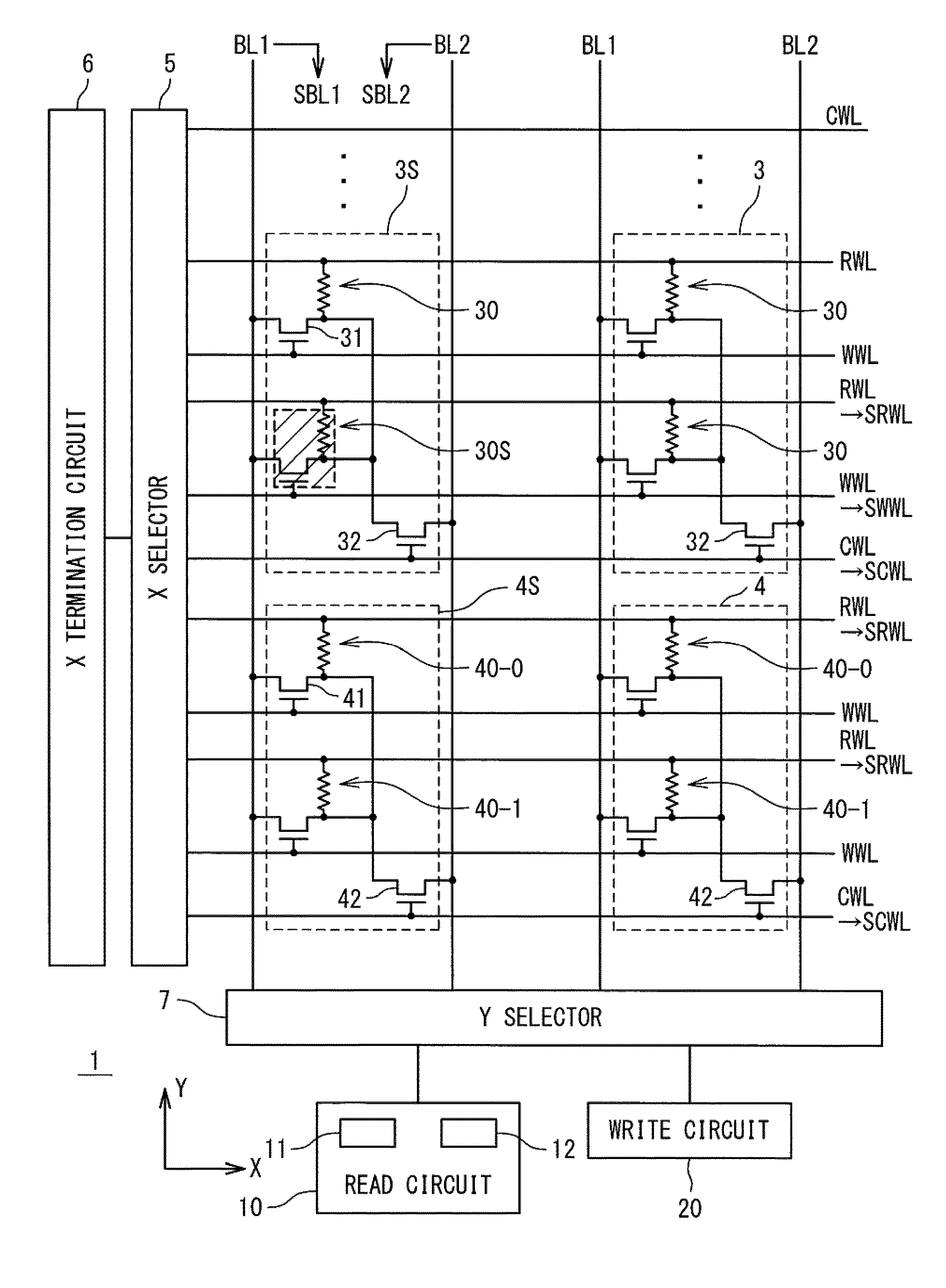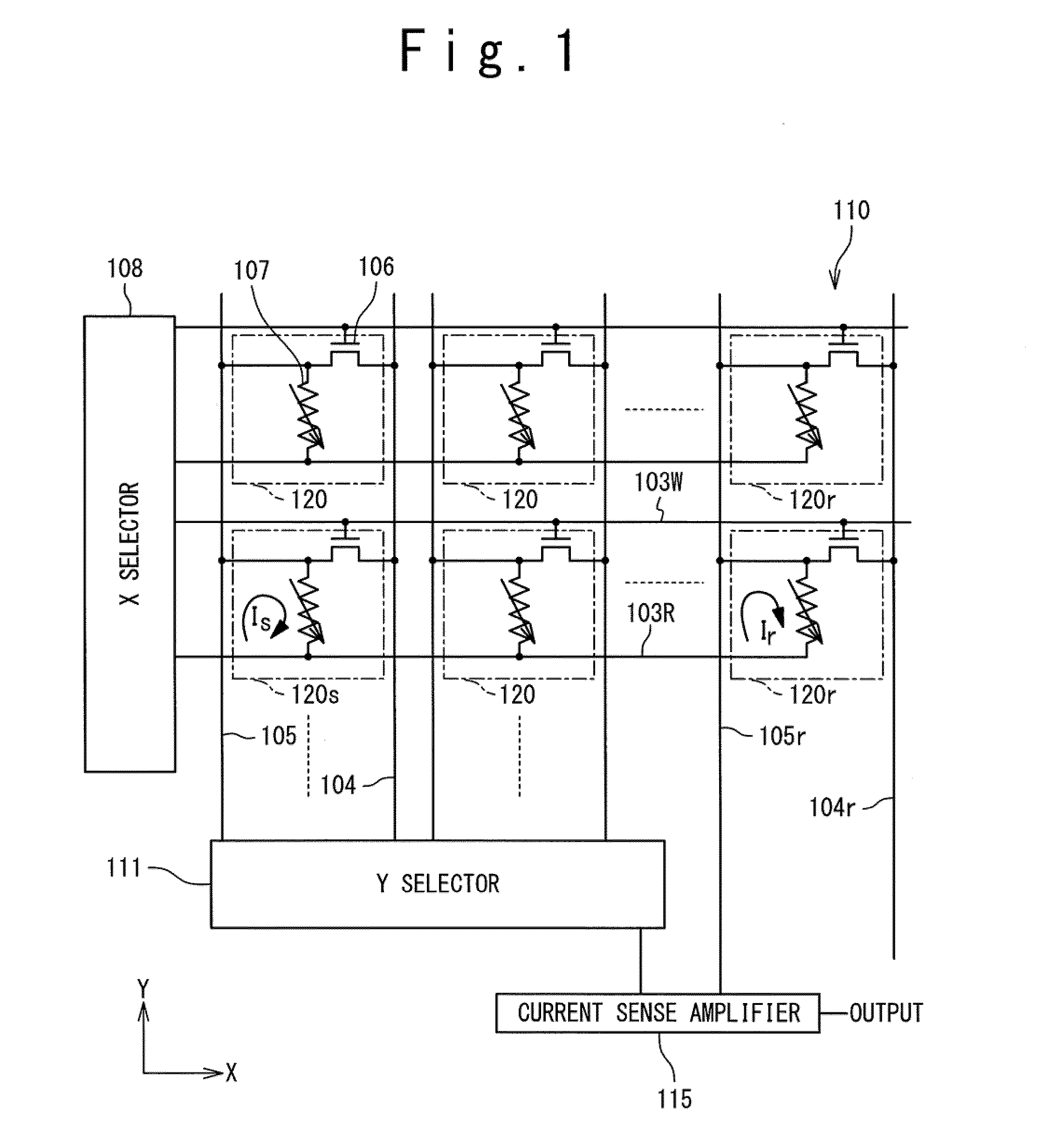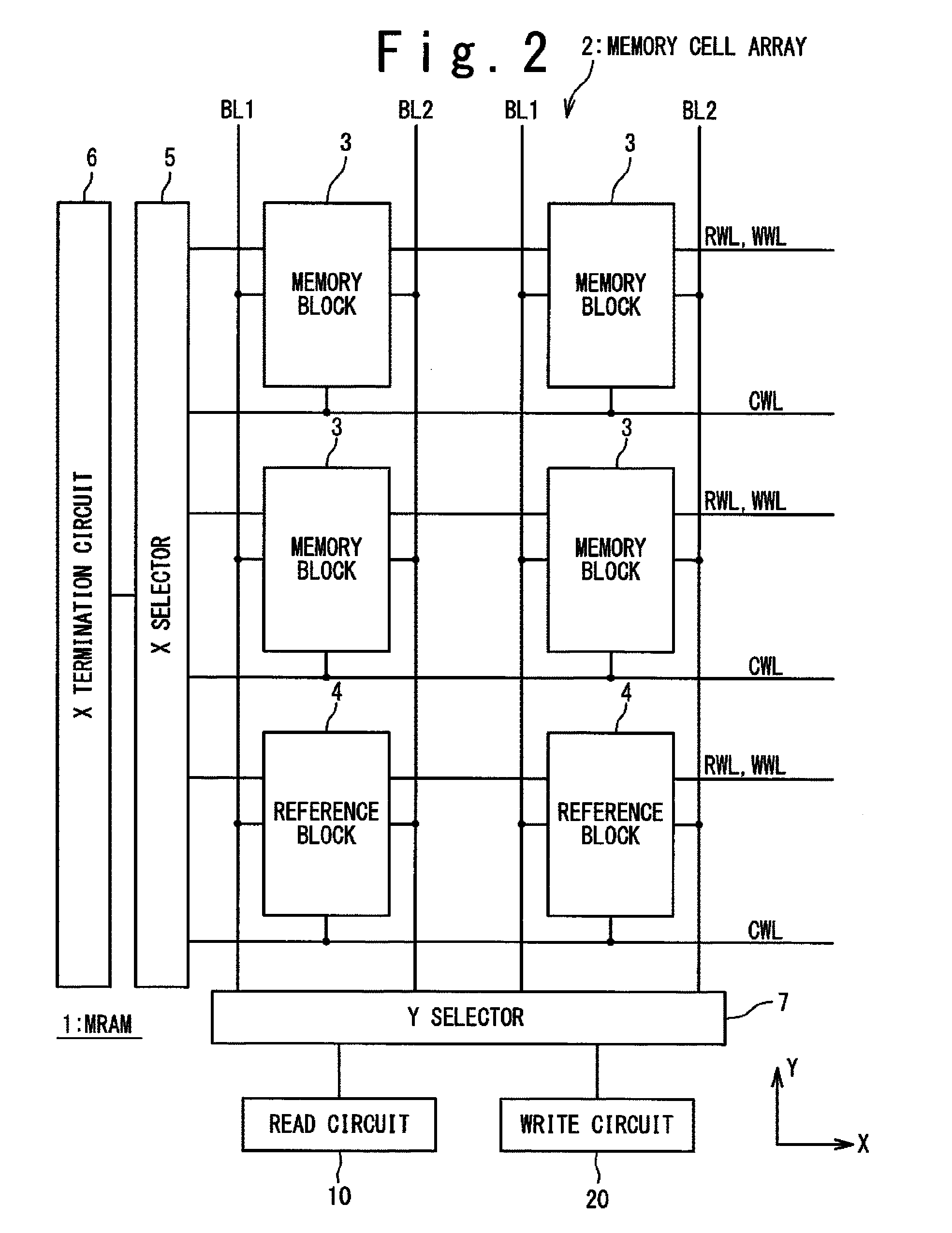Magnetic random access memory
a random access and memory technology, applied in the field of magnetic random access memory, can solve the problems of deterioration in data determination reliability, difficult in practice to make voltage vs and voltage vns exactly the same, etc., and achieve the effect of improving selectivity of memory cells at the time of data writing to the mram and improving reliability of read data at the time of data reading from the mram
- Summary
- Abstract
- Description
- Claims
- Application Information
AI Technical Summary
Benefits of technology
Problems solved by technology
Method used
Image
Examples
first embodiment
1. First Embodiment
1-1. Circuit Configuration
[0064]FIG. 2 is a block diagram schematically showing a configuration of an MRAM in a first embodiment of the present invention. The MRAM 1 is provided with a memory cell array 2 in which a plurality of memory cells are arranged in a matrix form. The memory cell array 2 is sectioned into a plurality of blocks (3, 4). The plurality of blocks are arranged in a matrix form. More specifically, the plurality of blocks include a plurality of memory blocks 3 arranged in a matrix form and a row of reference blocks 4 arranged in the X-direction. The memory block 3 is a block for storing data. On the other hand, the reference block 4 is a block that is referred to at a time of data reading.
[0065]The MRAM 1 is further provided with a plurality of write word lines (first word lines) WWL, a plurality of read word lines (second word lines) RWL and a plurality of common word lines CWL. The write word line WWL, the read word line RWL and the common word ...
second embodiment
2. Second Embodiment
[0182]Next, a second embodiment of the present invention will be described below. In the second embodiment, the number of reference cells 40 included in one reference block 4 is different from that in the first embodiment. The same reference numerals are given to the same components as those described in the first embodiment, and an overlapping description will be omitted as appropriate.
[0183]FIG. 18 shows a configuration of one reference block 4 in the second embodiment. The one reference block 4 has m reference cells 40 (m is not less than 3) and the block transistor 42. Data of each reference cell 40 is fixed. Specifically, in a case where m is an even number, m / 2 reference cells 40 each is the reference cell 40-0 in which the fixed data “0” is stored, and the other m / 2 reference cells 40 each is the reference cell 40-1 in which the fixed data “1” is stored. In a case where m is an odd number, (m−1) / 2 reference cells 40 each is the reference cell 40-0 in which...
third embodiment
3. Third Embodiment
[0193]Next, a third embodiment of the present invention will be described below. In the third embodiment, the configuration of the read circuit 10 and the resistance value of the reference cell 40 are different from those in the first embodiment. The same reference numerals are given to the same components as those described in the first embodiment, and an overlapping description will be omitted as appropriate.
[0194]FIG. 20 shows one example of the circuit configuration of the first voltage generation circuit 11 and the I-V conversion circuit 13 in the third embodiment. The circuit configuration shown in FIG. 20 has the NMOS transistor MN3, the load resistor RA and the inverter INV. As compared with the configuration shown in FIG. 6, the PMOS transistors MP1 to MP2, the NMOS transistors MN1, MN2 and MN4 and the load resistor RB are omitted. Therefore, the bit line current IBL is not divided and the current-voltage conversion coefficient of the I-V conversion circu...
PUM
 Login to View More
Login to View More Abstract
Description
Claims
Application Information
 Login to View More
Login to View More - R&D
- Intellectual Property
- Life Sciences
- Materials
- Tech Scout
- Unparalleled Data Quality
- Higher Quality Content
- 60% Fewer Hallucinations
Browse by: Latest US Patents, China's latest patents, Technical Efficacy Thesaurus, Application Domain, Technology Topic, Popular Technical Reports.
© 2025 PatSnap. All rights reserved.Legal|Privacy policy|Modern Slavery Act Transparency Statement|Sitemap|About US| Contact US: help@patsnap.com



